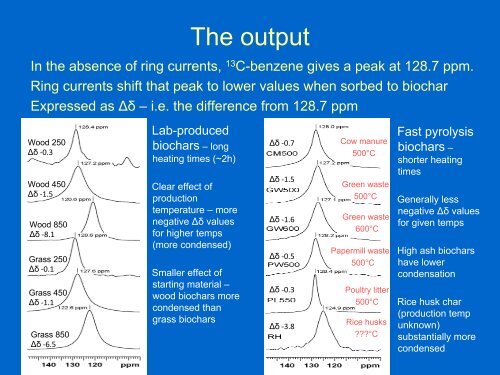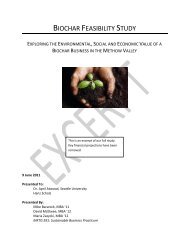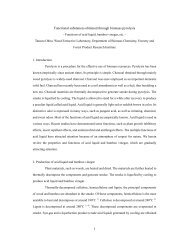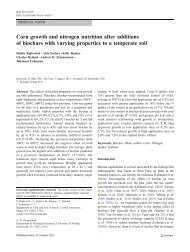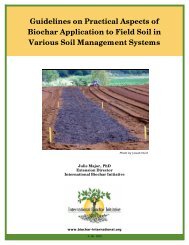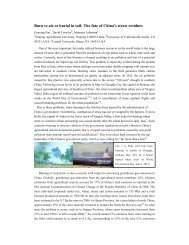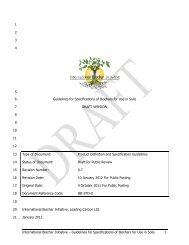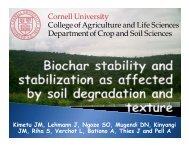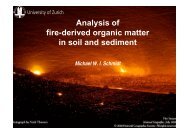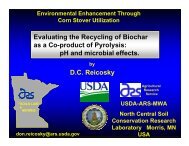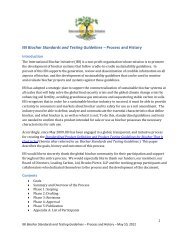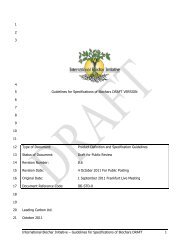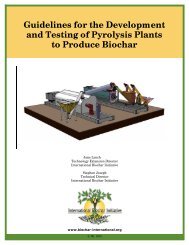A simple method for determining biochar condensation
A simple method for determining biochar condensation
A simple method for determining biochar condensation
You also want an ePaper? Increase the reach of your titles
YUMPU automatically turns print PDFs into web optimized ePapers that Google loves.
The output<br />
In the absence of ring currents, 13 C-benzene gives a peak at 128.7 ppm.<br />
Ring currents shift that peak to lower values when sorbed to <strong>biochar</strong><br />
Expressed as Δδ – i.e. the difference from 128.7 ppm<br />
Wood 250<br />
Δδ ‐0.3<br />
Wood 450<br />
Δδ ‐1.5<br />
Wood 850<br />
Δδ ‐8.1<br />
Grass 250<br />
Δδ ‐0.1<br />
Grass 450<br />
Δδ ‐1.1<br />
Grass 850<br />
Δδ ‐6.5<br />
Lab-produced<br />
<strong>biochar</strong>s – long<br />
heating times (~2h)<br />
Clear effect of<br />
production<br />
temperature – more<br />
negative Δδ values<br />
<strong>for</strong> higher temps<br />
(more condensed)<br />
Smaller effect of<br />
starting material –<br />
wood <strong>biochar</strong>s more<br />
condensed than<br />
grass <strong>biochar</strong>s<br />
Δδ ‐0.7<br />
Δδ ‐1.5<br />
Δδ ‐1.6<br />
Δδ ‐0.5<br />
Δδ ‐0.3<br />
Δδ ‐3.8<br />
Cow manure<br />
500°C<br />
Green waste<br />
500°C<br />
Green waste<br />
600°C<br />
Papermill waste<br />
500°C<br />
Poultry litter<br />
500°C<br />
Rice husks<br />
???°C<br />
Fast pyrolysis<br />
<strong>biochar</strong>s –<br />
shorter heating<br />
times<br />
Generally less<br />
negative Δδ values<br />
<strong>for</strong> given temps<br />
High ash <strong>biochar</strong>s<br />
have lower<br />
<strong>condensation</strong><br />
Rice husk char<br />
(production temp<br />
unknown)<br />
substantially more<br />
condensed


